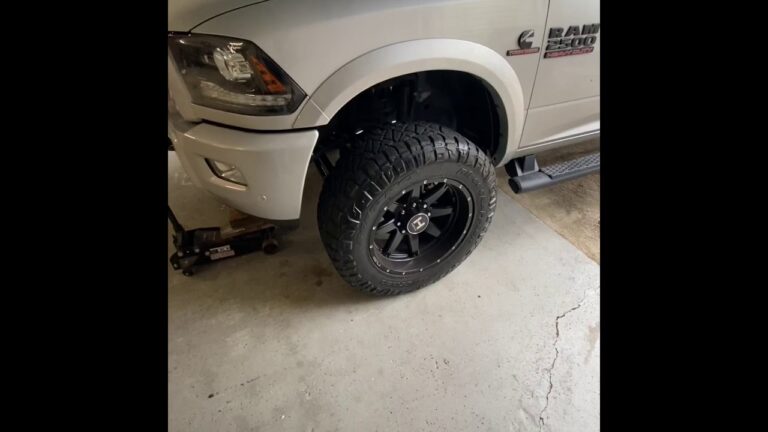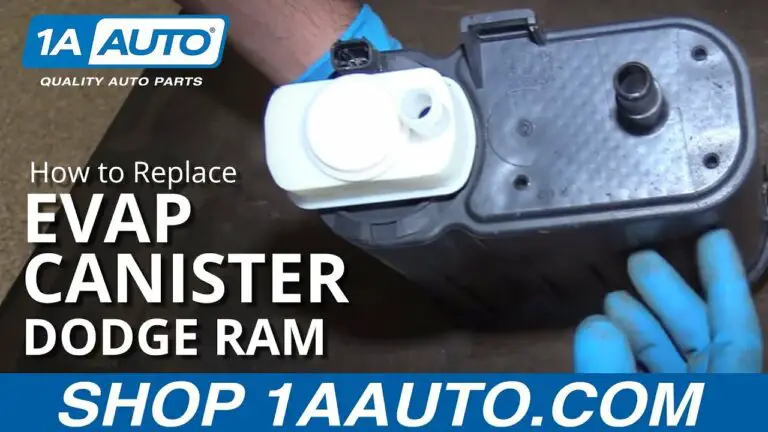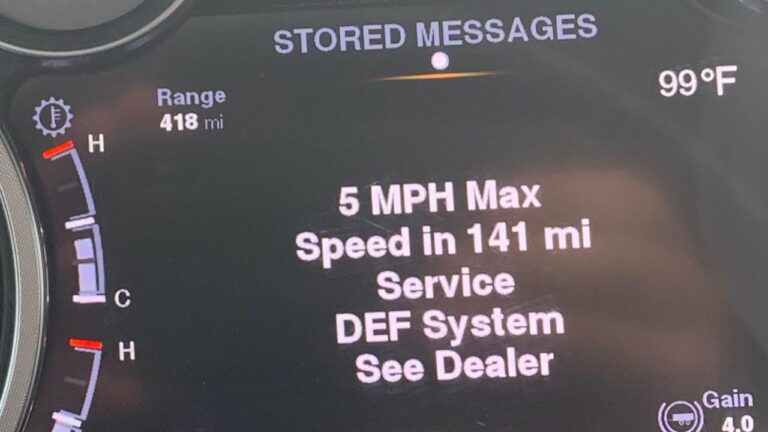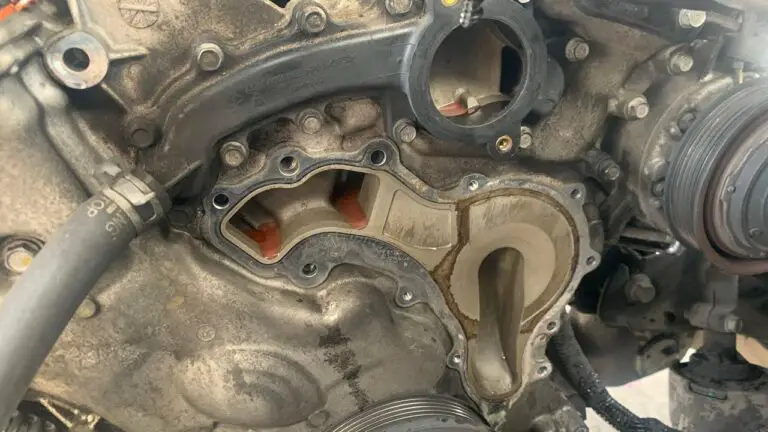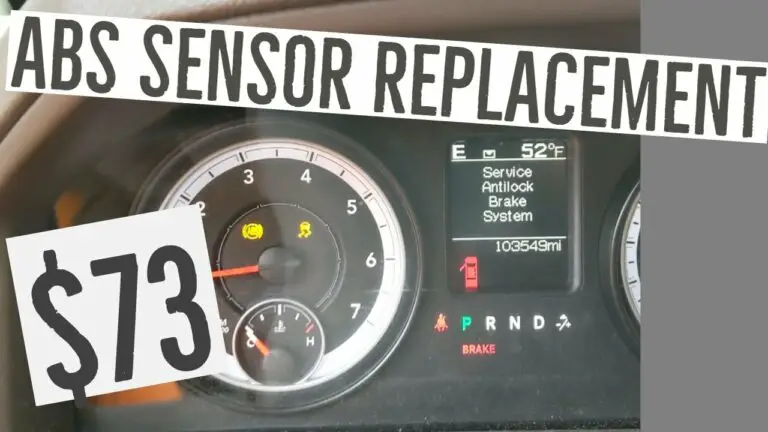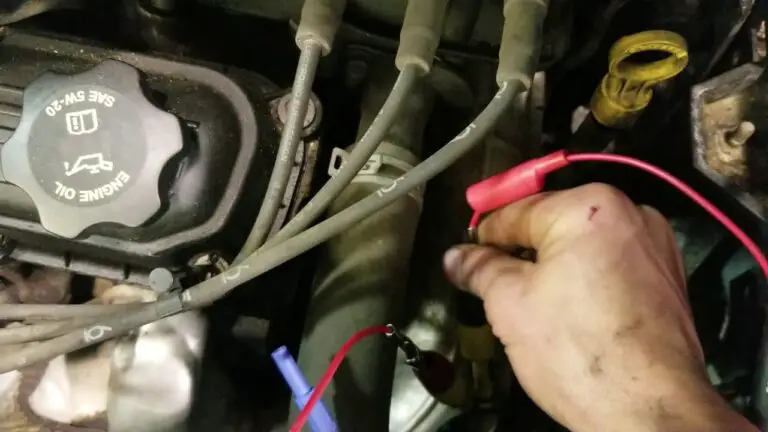Dodge Ram Shift Linkage Adjustment
Smooth shifting is crucial for any vehicle, especially for Dodge Ram trucks that are built to handle heavy loads and rough terrain. However, if the shift linkage is not adjusted properly, it can cause difficulty in shifting gears and may even damage the transmission. This guide provides a step-by-step procedure for adjusting the Dodge Ram shift linkage to ensure smooth shifting and optimal performance.
Importance of smooth shifting in Dodge Ram trucks
Smooth shifting not only enhances the driving experience but also helps to maintain the longevity of the transmission components. When the shift linkage is adjusted properly, the gears engage seamlessly, reducing the wear and tear on the transmission.
The overview of the shift linkage system
consists of various components such as the shift cable, shift lever, and shift mechanism. These components work together to connect the transmission to the shift knob, allowing the driver to change gears smoothly.
Purpose of the guide
The purpose of this guide is to provide a comprehensive understanding of the shift linkage system and a step-by-step procedure for adjusting the linkage to ensure smooth shifting and optimal performance.
Symptoms of Faulty Shift Linkage
The shift linkage is a critical component of the transmission system, and any issue with it can cause problems with gear shifting. Here are some of the most common symptoms of a faulty shift linkage:
| Symptom | Description |
|---|---|
| Difficulty shifting gears | Shifting gears feels more difficult than usual or requires more force |
| Grinding noise during shifting | A noticeable grinding noise occurs when shifting gears |
| Inability to shift into certain gears | One or more gears cannot be engaged, often accompanied by resistance or grinding |
| Delayed engagement of gears | A delay occurs between the shift and the engagement of the selected gear |
Difficulty Shifting Gears
If you’re experiencing difficulty shifting gears, such as the gear lever being stiff or not moving smoothly, it could be due to a problem with the shift linkage. A misaligned or loose shift linkage can prevent the gears from engaging correctly, making it difficult to shift gears.
Grinding Noise During Shifting
Another common symptom of a faulty shift linkage is a grinding noise when shifting gears. This sound occurs when the gears are not engaging properly, and the teeth are rubbing against each other. It can cause damage to the transmission over time, so it’s important to address this issue as soon as possible.
Inability to Shift Into Certain Gears
If you’re unable to shift into certain gears, such as reverse or first gear, it could be due to a problem with the shift linkage. A misaligned or damaged shift linkage can prevent the gears from engaging, making it impossible to shift into specific gears.
Delayed Engagement of Gears
Delayed engagement of gears is another symptom of a faulty shift linkage. When you shift gears, there may be a delay before the gear engages, or it may not engage at all. This can cause jerky movements and affect the overall driving experience.
If you’re experiencing any of these symptoms, it’s important to get your shift linkage checked and adjusted by a professional to ensure smooth shifting and optimal performance.
Preparing for Shift Linkage Adjustment
Before you begin adjusting the shift linkage on your Dodge Ram truck, there are a few things you need to prepare. Here’s a step-by-step guide to help you prepare for the adjustment:
Tools and Equipment Needed
To adjust the shift linkage, you’ll need a few tools and equipment, including
- Jack and jack stands
- Wrenches and sockets (metric and standard)
- Screwdrivers
- Pliers
- Marker or paint
- Penetrating oil
- Grease
It’s essential to have all the necessary tools and equipment before starting the adjustment process.
Identifying the Shift Linkage Components
The shift linkage system consists of various components, including the shift cable, shift lever, and shift mechanism. It’s essential to identify these components before starting the adjustment process to avoid confusion.
The shift cable is the most crucial component of the shift linkage system that connects the shift lever to the transmission. The shift lever is usually located on the side of the transmission, while the shift mechanism is located inside the transmission.
Precautions to Take Before Beginning the Adjustment
Before starting the adjustment process, it’s essential to take a few precautions to ensure your safety and avoid damage to the vehicle. Here are some precautions to keep in mind:
- Make sure the vehicle is on a flat surface and the parking brake is engaged.
- Allow the engine and transmission to cool down before starting the adjustment process.
- Use jack stands to support the vehicle and prevent it from falling.
- Wear safety goggles and gloves to protect your eyes and hands.
- Avoid smoking or using open flames around the vehicle, as there could be flammable materials present.
- Keep children and pets away from the work area.
By taking these precautions, you can ensure a safe and successful shift linkage adjustment process.
Adjusting the Shift Linkage
Hi there! Now that you’ve prepared for the shift linkage adjustment, it’s time to start the process. Here’s a step-by-step guide on how to adjust the shift linkage on your Dodge Ram truck:
Step-by-Step Procedure for Adjusting the Linkage
- First, locate the shift linkage components, including the shift cable, shift lever, and shift mechanism.
- Loosen the lock nuts on the shift cable and adjust the cable so that it’s in the neutral position.
- Adjust the shift lever to the neutral position by moving it back and forth until it’s in the middle.
- Mark the position of the shift lever and the shift mechanism with paint or a marker to ensure you can return to the neutral position if needed.
- Loosen the bolts that hold the shift mechanism in place and adjust the mechanism until it’s in the neutral position.
- Tighten the bolts to secure the shift mechanism in place.
- Move the shift lever back and forth to ensure it’s in the neutral position.
- Tighten the lock nuts on the shift cable.
Fine-Tuning the Adjustment for Optimal Performance
After completing the basic adjustment process, you may need to fine-tune the shift linkage for optimal performance. Here are some tips to help you fine-tune the adjustment:
- Check the gear engagement to ensure that the gears engage smoothly and without any grinding or delays.
- If you notice any issues with gear engagement, adjust the shift mechanism until the gears engage smoothly.
- If the gears are engaging too quickly, adjust the shift cable to provide more resistance.
Testing the Shift Linkage after Adjustment
Once you’ve adjusted the shift linkage, it’s essential to test it to ensure it’s working correctly. Here’s how to test the shift linkage:
- Start the engine and let it idle.
- Depress the clutch pedal and shift into each gear, starting with the first gear and moving up to the highest gear.
- Release the clutch pedal slowly while giving the engine a little gas to ensure that each gear engages smoothly.
- Check for any grinding or delays in gear engagement.
If you notice any issues during the test, you may need to fine-tune the adjustment further until the shift linkage is working correctly.
By following these steps, you can adjust the shift linkage on your Dodge Ram truck and ensure smooth shifting and optimal performance.
Troubleshooting Tips
As with any mechanical adjustment, there may be some issues that arise during the process. Here are some common issues that may arise when adjusting the shift linkage on your Dodge Ram truck, along with tips on how to diagnose and fix them:
Common Issues That May Arise During Adjustment
- Shift lever not moving into gear: If the shift lever is not moving into gear, it’s likely due to a loose or damaged shift cable.
- Difficulty shifting gears: If you’re having difficulty shifting gears, it may be due to a misaligned shift linkage or a worn-out shift cable.
- Grinding noise during shifting: A grinding noise during shifting may be due to a misaligned or worn-out shift linkage or a worn-out synchronizer.
- Inability to shift into certain gears: If you’re unable to shift into certain gears, it may be due to a worn-out shift cable or a misaligned shift linkage.
How to Diagnose and Fix These Issues
Here are some common problems and their solutions:
Shift lever not moving into gear:
If you find that the shift lever is not moving into gear, the shift cable may be damaged or loose. First, check the connections and tighten any that are loose.
If this doesn’t solve the problem, it may be necessary to replace the shift cable.
Difficulty shifting gears:
If you are having difficulty shifting gears, the shift linkage may need adjustment. This is often the result of wear and tear over time. To adjust the linkage, first, locate the adjustment points on the linkage components.
Then, loosen the locknuts and make the necessary adjustments to the linkage rods. Afterward, tighten the locknuts back in place.
Grinding noise during shifting:
If you are hearing a grinding noise during shifting, the problem may be caused by worn-out synchronizers. Synchronizers are responsible for matching the speeds of the gears, and when they wear out, they can cause grinding.
To fix this problem, you will need to replace the worn-out synchronizer.
Inability to shift into certain gears:
If you find that you are unable to shift into certain gears, the shift linkage may need adjustment or the shift cable may be worn out. As mentioned earlier, adjusting the linkage is a straightforward process. If the shift cable is worn out, it will need to be replaced.
In summary, diagnosing and fixing shift linkage issues in your Dodge Ram is possible with the right tools and knowledge. By following the steps outlined above, you can restore smooth shifting performance and ensure your safety on the road.
When to Seek Professional Assistance
If you’re experiencing issues with your shift linkage that you’re unable to diagnose and fix on your own, it may be time to seek professional assistance. Here are some signs that it’s time to take your truck to a mechanic:
- You’re unable to diagnose and fix the issue yourself.
- The issue persists even after attempting to fix it.
- You’re uncomfortable working on your vehicle or lack the necessary tools and equipment.
Remember, it’s always better to be safe than sorry when it comes to vehicle maintenance. If you’re unsure of what you’re doing, it’s best to seek professional assistance rather than risk causing further damage to your vehicle.
By following these troubleshooting tips, you can diagnose and fix common issues that may arise during the shift linkage adjustment process on your Dodge Ram truck.
Maintenance Tips
Proper maintenance of your Dodge Ram truck’s shift linkage is crucial to ensure smooth and efficient shifting. Here are some maintenance tips to keep your shift linkage in top shape:
Importance of Regular Maintenance for the Shift Linkage
Regular maintenance of the shift linkage can help prevent issues such as difficulty shifting gears, grinding noise during shifting, and delayed engagement of gears. It also ensures optimal performance and longevity of the shift linkage components.
Recommended Maintenance Schedule
| Maintenance Task | Frequency |
|---|---|
| Inspect shift linkage components | Every 6 months or 6,000 miles |
| Lubricate shift linkage components | Every 12 months or 12,000 miles |
| Adjust shift linkage | As needed or during regular maintenance, |
It’s recommended to perform maintenance on the shift linkage at regular intervals, such as during routine oil changes. The frequency of maintenance may vary depending on your driving habits and the conditions in which you operate your vehicle.
As a general guideline, it’s recommended to perform maintenance on the shift linkage every 30,000 miles or every 3 years, whichever comes first.
DIY Maintenance Procedures for the Shift Linkage
Here are some DIY maintenance procedures for the shift linkage that you can perform at home:
- Lubrication: Lubricate the shift linkage components with a high-quality lubricant to reduce friction and ensure smooth operation. Use a spray lubricant or grease to lubricate the shift linkage components, including the shift cable, shift lever, and shift linkage bushings.
- Inspection: Regularly inspect the shift linkage components for wear and damage. Look for signs of rust, corrosion, or excessive wear. If you notice any issues, address them promptly to prevent further damage.
- Adjustment: If you notice any issues with shifting, such as difficulty shifting gears or delayed engagement of gears, it may be time to adjust the shift linkage. Follow the steps outlined in Section IV to adjust the shift linkage for optimal performance.
By following these maintenance tips, you can ensure the optimal performance and longevity of your Dodge Ram truck’s shift linkage. Regular maintenance can also help prevent costly repairs down the road.
Benefits of a Properly Adjusted Shift Linkage
Adjusting the shift linkage of your Dodge Ram truck can bring a number of benefits. Here are some benefits of a properly adjusted shift linkage:
Improved Shifting Performance
One of the primary benefits of adjusting the shift linkage is improved shifting performance. A properly adjusted shift linkage ensures smooth and effortless shifting between gears, allowing for a more comfortable driving experience. With a smooth shift, you can also avoid excessive wear and tear on your transmission, which can help extend its lifespan.
Extended Lifespan of Transmission Components
Properly adjusting the shift linkage can also help extend the lifespan of the transmission components. By ensuring smooth shifting and reducing the likelihood of grinding or other issues, the transmission components are subjected to less wear and tear, which can help them last longer.
Better Fuel Efficiency and Overall Vehicle Performance
A properly adjusted shift linkage can also improve your vehicle’s fuel efficiency and overall performance. By reducing the effort required to shift gears, the engine is subjected to less strain, which can improve fuel efficiency. Additionally, by ensuring smooth and efficient shifting, the engine is able to operate more efficiently, leading to better overall performance.
A properly adjusted shift linkage can bring a range of benefits, from improved shifting performance and extended lifespan of transmission components to better fuel efficiency and overall vehicle performance. If you notice any issues with your shift linkage, consider adjusting it to reap these benefits.
Frequently Asked Questions
Here are some frequently asked questions about shift linkage adjustment, along with expert answers and advice:
How do I know if my shift linkage needs adjustment?
Can I adjust the shift linkage myself, or should I take it to a professional?
How do I fine-tune the adjustment for optimal performance?
Conclusion
In conclusion, a properly adjusted shift linkage can make a world of difference in the shifting performance of your Dodge Ram truck. By following the steps outlined in this guide and implementing regular maintenance, you can enjoy smooth and efficient shifting for years to come. Remember to always take precautions when working on your vehicle and to seek professional assistance if needed. Don’t let a faulty shift linkage compromise your driving experience, take charge and make the necessary adjustments today!


